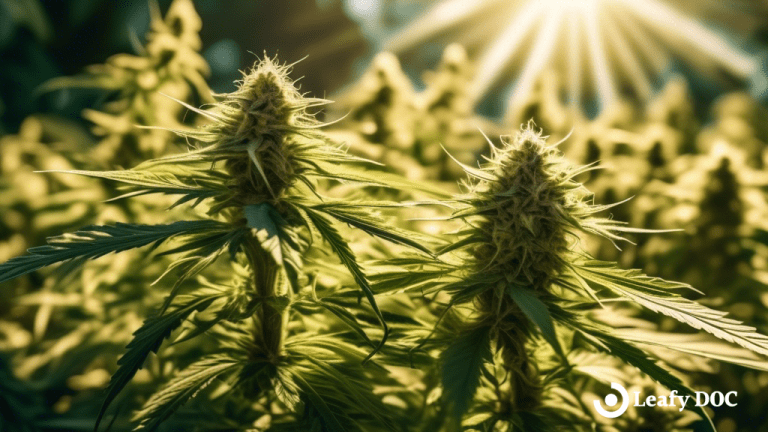Breast Cancer
What is breast cancer?
Breast cancer is a type of cancer that can start in one or both breasts. While breast cancer predominately occurs in women, men can also get breast cancer.
Most breast lumps are benign and not cancerous (malignant). Non-cancer breast tumors are abnormal growths but do not spread and are not life-threatening. However, some types of benign breast lumps can increase a woman’s risk of breast cancer later in life. A doctor should check any breast lump or change to determine if it is benign or cancerous and if it might affect your future cancer risk.
What causes breast cancer?
The exact cause of breast cancer is unknown, but we know some risk factors associated with these types of cancers. What you eat and how often you exercise are two lifestyle-related risk factors. Hormones often influence the development of some instances of breast cancer.
Researchers have also found that normal breast cells can become cancerous because of genetic changes or mutations. Since scientists have not yet discovered all genes, women with breast cancer in their family history could inherit an abnormal gene that doesn’t appear on a genetic test.
Where does breast cancer start?
The breast is an organ above the upper ribs and chest muscles. There is a left and right breast with glands, ducts, and fatty tissue. The amount of adipose tissue in the breast determines the size of each breast, and breast cancers can begin in any part.
The different breast parts include:
- Lobules-the glands that make breast milk.
- Ducts-small canals from the lobules that transport milk to the nipple.
- The nipple is the opening where the smaller ducts join so the milk can exit the breast.
- The nipple is surrounded by darker, thicker skin called the areola.
- Stroma- the fat and connective tissue surrounding the ducts and lobules to keep them in place.
How does it spread?
Breast cancer is more likely to spread when the cancer cells get into the blood or lymph system and are transported to other body parts.
Symptoms of Breast Cancer
Knowing how your breasts typically look and feel is integral to your breast health. Although regular breast cancer screenings are essential, mammograms don’t always work for early detection.
A common symptom of breast cancer is a lump or mass. A stiff, painless mass with an irregular shape is more likely to be cancer, but breast cancer can be soft, round, tender, or painful.
Other possible symptoms of breast cancer include:
- Swelling of any part of a breast
- Skin dimpling
- Breast or nipple pain
- Nipple retraction
- Red, dry, flaking, or thickened nipple/ breast skin
- Nipple discharge
- Swollen underarm lymph nodes or close to the collarbone
Benign breast conditions can also cause the above symptoms. Still, a trusted healthcare professional should check for any new changes in your breasts, just in case.
Types of Breast Cancer
Ductal or lobular carcinoma
Most breast cancers are carcinomas that start in the body’s epithelial cells. When carcinomas form in the breast, they typically start in the milk ducts or the lobules.
Intraductal Carcinoma (DCIS)
Intraductal carcinoma is a pre or non-invasive breast cancer.
Invasive breast cancer
Invasive breast cancer spreads into the surrounding breast tissue. The most common type is invasive ductal carcinoma, making up about 70-80 percent of all breast cancers.
Triple-negative breast cancer
Triple-negative breast cancer is an aggressive and invasive breast cancer. With this breast cancer type, the cancer cells don’t have estrogen or progesterone receptors and no longer make a vital protein called HER2.
Inflammatory breast cancer
Inflammatory breast cancer is another aggressive (yet rare) invasive breast cancer. Cancer cells block lymph vessels for this type, causing the breast to look inflamed or swollen. IBC makes up approximately 1 to 5 percent of all breast cancer.
Paget Disease
Paget’s breast disease starts in the breast ducts and spreads to the nipple skin and then to the areola. It is a rare type of cancer and makes up about 1-3 percent of all breast cancers.
Angiosarcoma
Sarcomas are rare and comprise less than one percent of all breast cancer. Angiosarcoma starts in the lining of blood vessels or lymph vessels and can sometimes be tracked to radiation therapy in that area of the body.
Phyllodes tumor
Phyllodes tumors are rare tumors that form in the breast’s connective tissue. Most are benign, but there have been a few malignant cases.
Breast Cancer Statistics
Here are some quick breast cancer facts provided by the Carol M. Baldwin Breast Cancer Research Fund and the CDC:
- Approximately 1 in 10 breast cancers (10%) are linked with known abnormal genes inherited from parents.
- Around 90 percent of breast cancers develop from acquired gene changes that haven’t been identified.
- Breast cancer accounts for about 30% of all new cancer cases in women annually in the United States.
- About 1 in 8 U.S. women will develop invasive breast cancer in their lifetime.
- Breast cancer is the leading cause of cancer-related death in the United States for Black and Hispanic women.
- Breast cancer is the second-leading cause of cancer-related death in the United States, following lung cancer, for Asian and Pacific Islander women, American Indian and Alaska Native women, and white women.
Medical Marijuana and Cancer
Medical marijuana is commonly found to possess significant anti-inflammatory and antioxidant properties, which can quickly help with chronic pain management and chemotherapy-induced nausea. Cannabinoid receptors within a cannabis Sativa plant bind to the brain and peripheral nerve cells and help regulate how you see and feel the pain to reduce symptoms like nausea, vomiting, and severe cancer pain.
Medical marijuana use, as opposed to other non-cannabinoid drugs, appears to be an excellent alternative to treat brain cancer patients and manage pain due to nerve damage or chemotherapy and other cancer treatments. Its medical use can also promote appetite in cancer patients who have experienced appetite and weight loss.
Federal Law & Cancer Patients
The 2018 United States Farm Bill describes hemp as a cannabis plant containing less than 0.3% THC. Hemp oil or CBD oil are products manufactured from extracts of industrial hemp. In contrast, the hemp seed oil is an edible fatty oil that is essentially cannabinoid-free. Some products contain other botanical extracts or non-prescription analgesics and are available as oral and topical tinctures for cancer pain management.
According to medical marijuana laws, hemp products containing less than 0.3% delta-9-THC are not scheduled or considered illegal drugs. According to the drug enforcement administration, they can be regarded as Farm Bill compliant for cancer patients.
CAM information
CAM represents cancer complementary and alternative medicine. These complementary and integrative health alternative therapies include:
- massage
- acupuncture
- tai chi
- inhaled marijuana
- green tea
- yoga
- meditation
- natural vitamins and supplements
Best Strains for Cancer patients
When it comes to the best medical marijuana strains to help a breast cancer patient, you need something to treat more severe pain and chemotherapy-induced nausea and vomiting. Since it is still a controlled substance, there isn’t much research regarding the best strains. Fortunately, many strains work extraordinarily to relieve muscle spasms, decrease blood pressure and swelling, and treat nausea, vomiting, tension, anxiety, and depression.
According to the National Cancer Institute and ongoing cancer research:
- Cannabis has been used for purposes for thousands of years.
- By federal law, the possession of Cannabis is illegal in the United States, except within approved research settings; however, a growing number of states, territories and the District of Columbia have enacted laws to legalize its medical and recreational use.
- The U.S. Food and Drug Administration hasn’t approved Cannabis as a treatment for cancer or any other medical condition.
- Chemical components of Cannabis, called cannabinoids, activate specific receptors throughout the body to produce pharmacological effects, particularly in the central nervous system and the immune system.
- Cannabinoids such as dronabinol and nabilone are approved drugs to treat cancer-related side effects and pain. Health insurance companies are far behind in supporting these drugs for use.
- Per the National Cancer Institute, cannabinoids may assist cancer patients with the treatment of cancer-related side effects.
Summary
Finding a way to cope with breast cancer-related pain can be challenging. It’s not easy finding conventional medications that are effective or that our bodies respond to correctly. Many prescription drugs have side effects, so medical marijuana can be a life-changing alternative for some cancer patients.
Remember, marijuana doesn’t cure breast cancer but helps manage chemotherapy and radiation symptoms. Discuss medical cannabis use with your physician and follow their advice on your cancer treatment plan. The severe health consequences of mixing cancer, chemotherapy, or other medications without approval can be painful. We recommend visiting the local dispensary for those who have cleared it with your doctor; you may find the connection between marijuana and breast cancer helps you get some relief.
Last Updated: June 14, 2024
Get Your Medical Card
Connect with a licensed physician online in minutes
Table of Contents
Keep Reading
-
Exploring The Role Of Cannabis In Mindful Movement
Uncover the fascinating link between cannabis and mindful movement in this insightful article. Explore how cannabis enhances mindfulness and movement practices. Click here to delve into the world of cannabis-infused mindfulness!
-
Discover The Top Cannabis Strains For Stress Relief
Looking for the ultimate stress relief? Check out our top cannabis strains that will melt away your worries and help you find tranquility. Discover the power of relaxation today!
-
Vaping Vs Smoking: Which Is The Best Cannabis Consumption Method?
Revolutionize your cannabis experience with the ultimate showdown: Vaping vs. Smoking! Discover the best method for enjoying cannabis and click now to elevate your consumption game.



